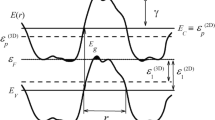Abstract
A compositionally graded thin film of FeSi2 was fabricated by a gravity-assisted pulsed laser ablation (GAPLA) system. By this method, a compositionally graded structure was successfully produced under a gravity field of 5400 G. We demonstrate that the atomic fraction of Fe, the heavier component of the thin film measured by scanning electron microscope/energy dispersive X-ray (SEM-EDX), showed increasing spatial distribution with the direction of gravity. We found that optimal laser fluence exists to give a thin film having the largest possible spatial compositional gradient. We found that surface energy density on the substrate surface is the key parameter to control the composition distribution. Furthermore, the ratio of Fe/Si of the film did not match that of the target. This result shows that the Si component is selectively etched during the film-forming process. Relatively high laser fluence as well as a very narrow space between the target and the substrate are essential to etch the film once it is deposited, in order to re-ionize and etch Si selectively while gravity accelerates both Fe and Si particles to the direction of gravity. We hypothesize that this process accounts for both the change in the stoichiometry and the formation of composition distribution.
Similar content being viewed by others
References
T. Mashimo, S. Okazaki, S. Shibasaki, Rev. Sci. Instrum. 68(11), 4225–4231 (1997)
T. Mashimo, X. Huang, T. Osakabe, M. Ono, M. Nishihara, H. Ihara, M. Sueyoshi, K. Shibasaki, S. Shibasaki, N. Mori, Rev. Sci. Instrum. 74(1), 160–163 (2003)
T. Mashimo, Phys. Rev. A 38, 4149 (1988)
D.B. Chrisey, G.K. Hubler, Pulsed Laser Deposition of Thin Films (Wiley-Interscience, New York, 1994)
E. Fogarassy, S. Lazare, Laser Ablation of Electronic Materials. European Materials Research Society Monographs, Vol. 4 (North-Holland, Amsterdam, 1992)
T. Yoshitake, T. Nishiyama, K. Nagayama, Diam. Relat. Mater. 9(3), 689–692 (2000)
T. Nishiyama, S. Iba, Y. Kurogi, K. Nagayama, in Proc. 56th Int. Astronautical Congress, CD-ROM IAC-05-A2.1.01 (2005)
T. Nishiyama, S. Morinaga, K. Nagayama, Rev. Sci. Instrum. 80, 033904 (2009)
Author information
Authors and Affiliations
Corresponding author
Rights and permissions
About this article
Cite this article
Morinaga, S., Nishiyama, T., Kajiwara, T. et al. Fabrication of compositionally graded thin films by gravity-assisted pulsed laser ablation. Appl. Phys. A 101, 743–746 (2010). https://doi.org/10.1007/s00339-010-6035-z
Received:
Accepted:
Published:
Issue Date:
DOI: https://doi.org/10.1007/s00339-010-6035-z




